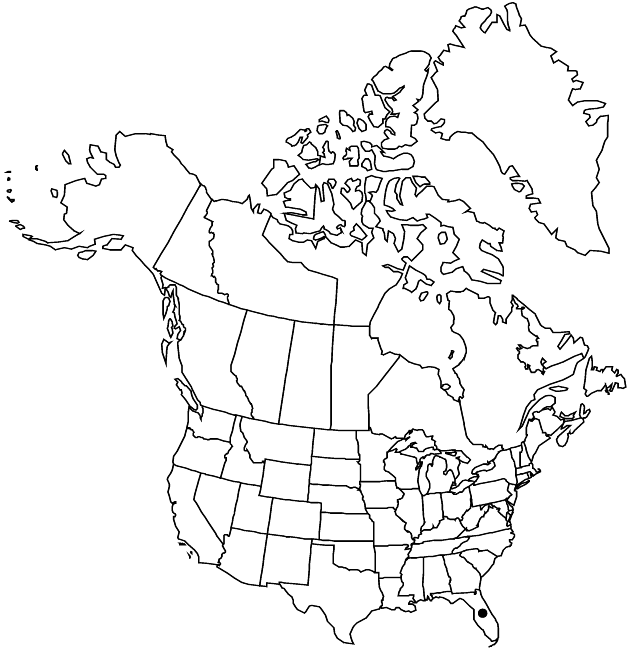Pectis humifusa
Prodr., 114. 1788.
Annuals or perennials, 2–25 cm (across; bases often ± woody); herbage not scented. Stems prostrate (mat-forming, densely leafy), puberulent (in decurrent lines). Leaves oblong-oblanceolate to obovate, 3–17 × 1.5–4 mm wide, margins with 2–6 pairs of setae 1–2 mm, faces glabrous (dotted with scattered, round oil-glands 0.1–0.2 mm). Heads borne singly or in congested, (leafy) cymiform arrays. Peduncles 1–12 mm. Involucres campanulate. Phyllaries distinct, obovate, 4.5–6 × 2–4 mm (faces densely dotted with scattered, circular oil-glands 0.05–0.2 mm). Ray florets 5; corollas 3.5–5 mm. Disc florets 12–21; corollas 2.5–3.5 mm (2-lipped). Cypselae 2.5–4 mm, mostly puberulent (ray cypselae abaxially glabrous); ray pappi of 2–3 slender, aristate scales 1.5–2.5 mm plus 2–10 lacerate scales or bristles; disc pappi of 4–15, antrorsely scabrid bristles or aristate scales 2–3 mm plus 0–15 bristles or scales. 2n = 72.
Phenology: Flowering year round.
Habitat: Sandy soils
Elevation: 0–10 m
Distribution

Fla., West Indies (Puerto Rico, Lesser Antilles), South America (Suriname).
Discussion
Pectis humifusa has been reported once from Florida (D. J. Keil 1975c), where it is probably adventive. In the Lesser Antilles, it occurs most frequently in the salt spray zone near the seashore; on some islands, it occurs inland as well.
Selected References
None.